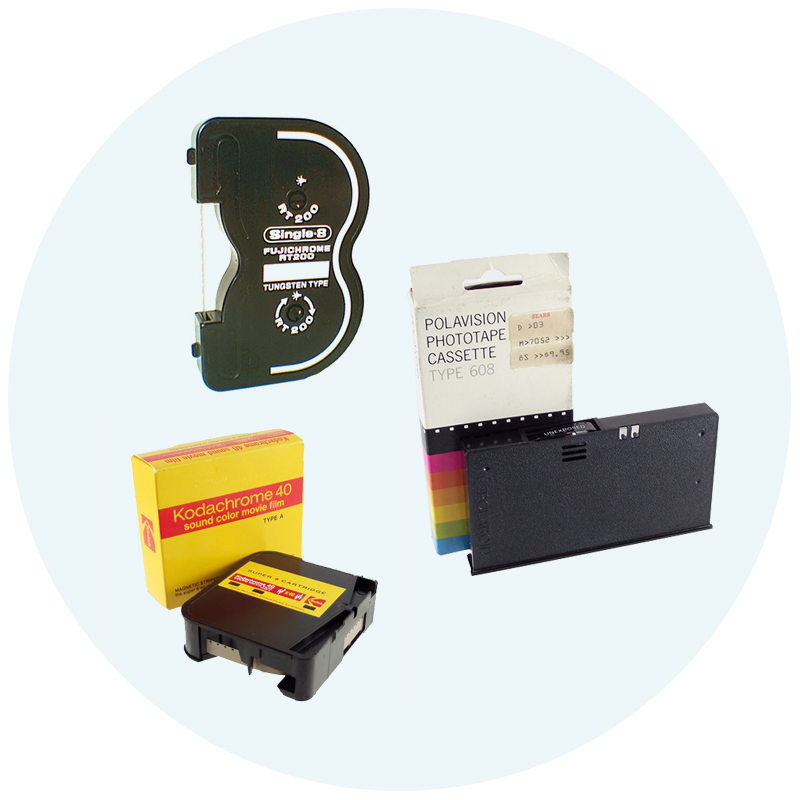Polavision
What later turned out to be a financial disaster for Polaroid was still a promising instant colour film format without sound in 1977. It was only able to capture 150 seconds of film, and was not great in quality. Polavision is the only of the 8 mm film formats where the film remained in the cassette after being developed. Like a proper instant system the film could be developed by the customer immediately after recording using the same unit which also served as projector.
An exposed but undeveloped cassette will show the word ‘Exposed’ in the window where the film is visible. For a developed film the word ‘Rerun’ shows.








